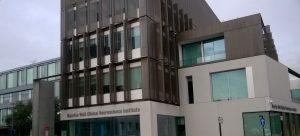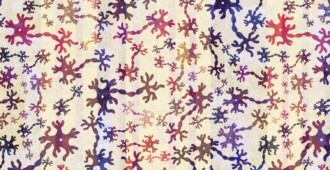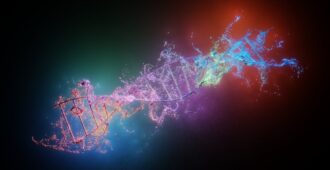During Awareness month in June we reported on the work of Dr James Bashford at King’s College London, exploring new ways of measuring muscle fasciculations in people with MND. The results from the one year pilot study have shown a lot of promise, which has led to Dr Bashford recently being awarded a Clinical Research Training Fellowship.
A common symptom of MND is the ‘rippling’ of muscle under the skin, these are known as muscle fasciculations. Dr Bashford is using new technology, called high-density surface electromyography (HD surface EMG), to record fasciculations in patients with MND. Surface EMG uses an electrical sensor that sticks to the skin and can record fasciculations in the underlying muscles.
In 2015, he was awarded a one-year MND Association grant, funded by the Sattaripour Foundation, to perform a preliminary study on new ways of measuring and studying them. Dr Bashford looked at whether recording muscles on the skin could be a more effective and less invasive (ie less painful!) technique than the needle electrodes that have traditionally been used.
His three year fellowship grant of £234,000 will allow him to continue work in this area of research and obtain his PhD in the process. The grant of is the tenth clinical fellowship to be awarded through the successful Medical Research Council / MND Association Lady Edith Wolfson Fellowship Programme.
“I am honoured to receive this prestigious award and confident that the approaches we are taking will clarify many unanswered questions relating to fasciculations,” said Dr Bashford.
“Although fasciculations are a common feature of MND, the role that they play in the disease is not well understood. Conventional needle electromyography, which involves placing a fine needle into the muscles, is invasive and uncomfortable, so there have been very few studies of how fasciculations change as the disease progresses.
In addition, needles can only measure a very small area of muscle, whereas the surface electrodes we are using can record fasciclulations over a field that is 100 times larger.”
The research will be conducted at the Maurice Wohl Clinical Neuroscience Institute at King’s College London, one of Europe’s largest centres for interdisciplinary neuroscience excellence, housing 250 scientists and clinicians.

Dr Bashford aims to recruit 20 participants with MND to the study from the King’s College Hospital Motor Nerve Clinic, plus four individuals with Benign Fasciculation Syndrome (a condition that does not involve damage to motor neurons). He will record changes in arm and leg muscles over a 12-month period, comparing the information obtained with muscle strength tests and other clinical measures of disease progression.
“One of the unique aspects of this project is the collaboration between neurologists, electrophysiologists and bioengineers,” adds Dr Bashford.
“We will work closely with engineers at Imperial College London, who are designing and testing new prototypes of the sensors as well as data transmission and collection devices. Towards the end of the project we will test this equipment in patients’ homes and assess the benefits of remote sensing technology.
Ultimately, we hope to incorporate the electrodes into a wearable garment that could prove a valuable clinical tool, which can be used to help test potential new therapies. After all, that’s what really counts for patients and their families.”






Thank you for working towards a cure for this horendous disease.